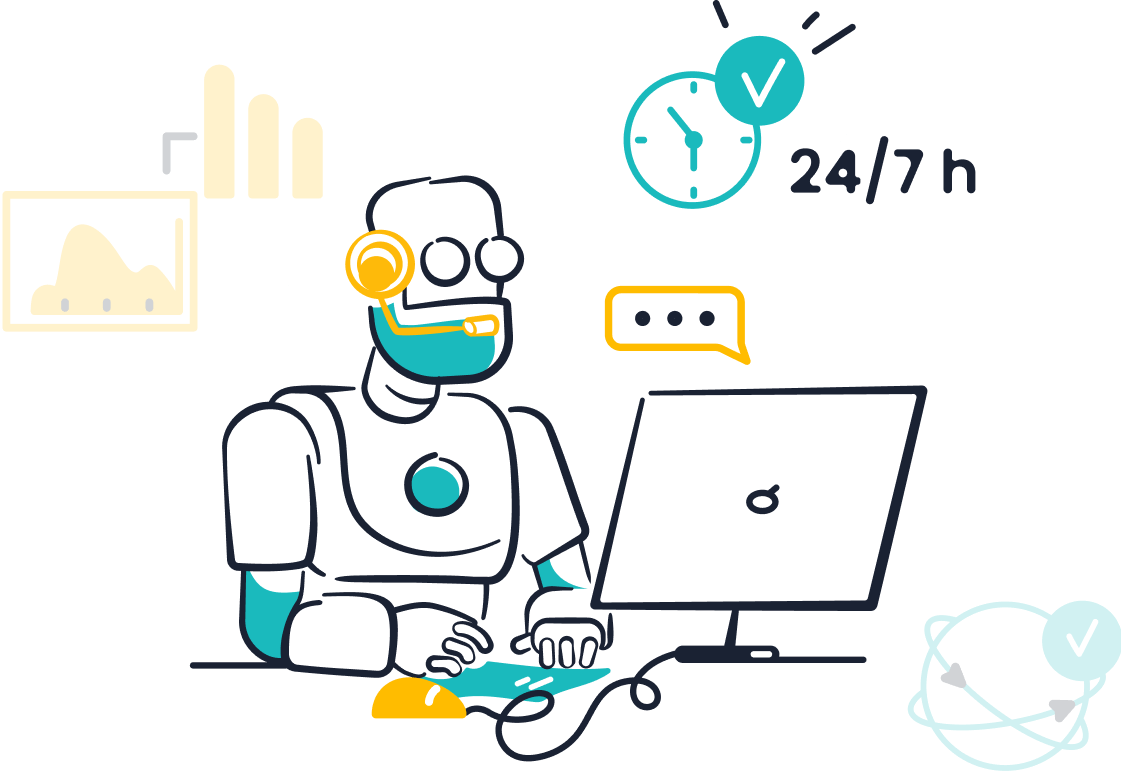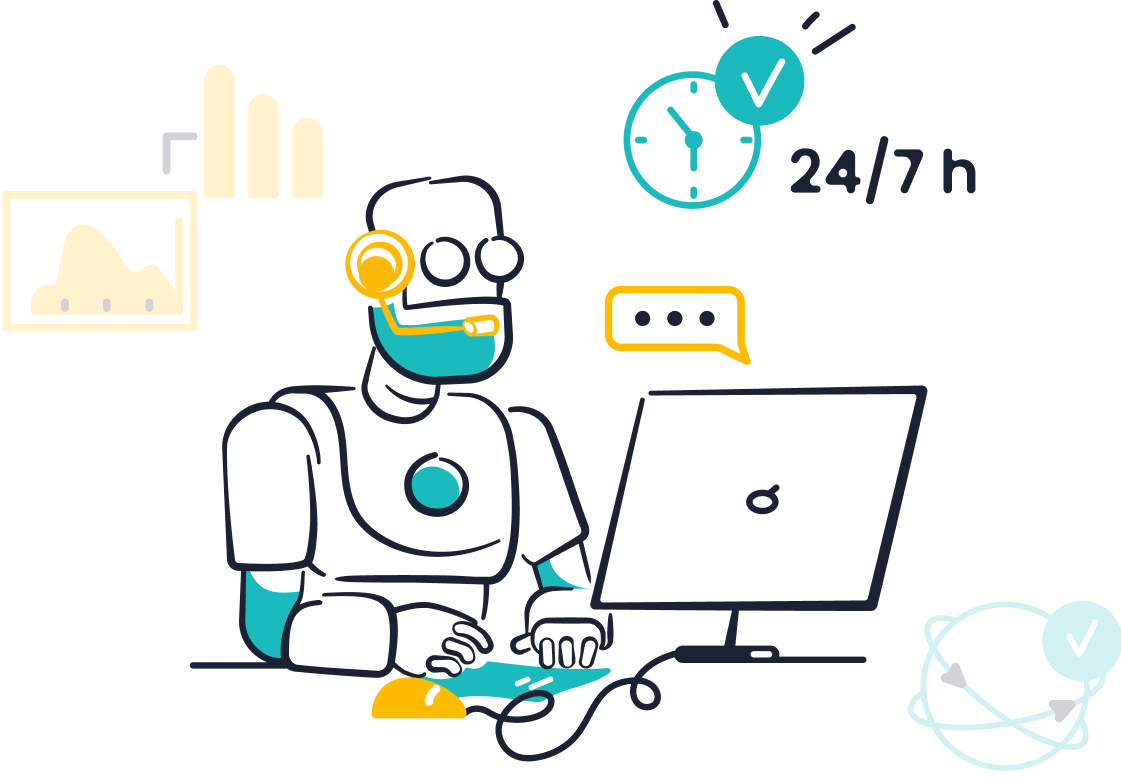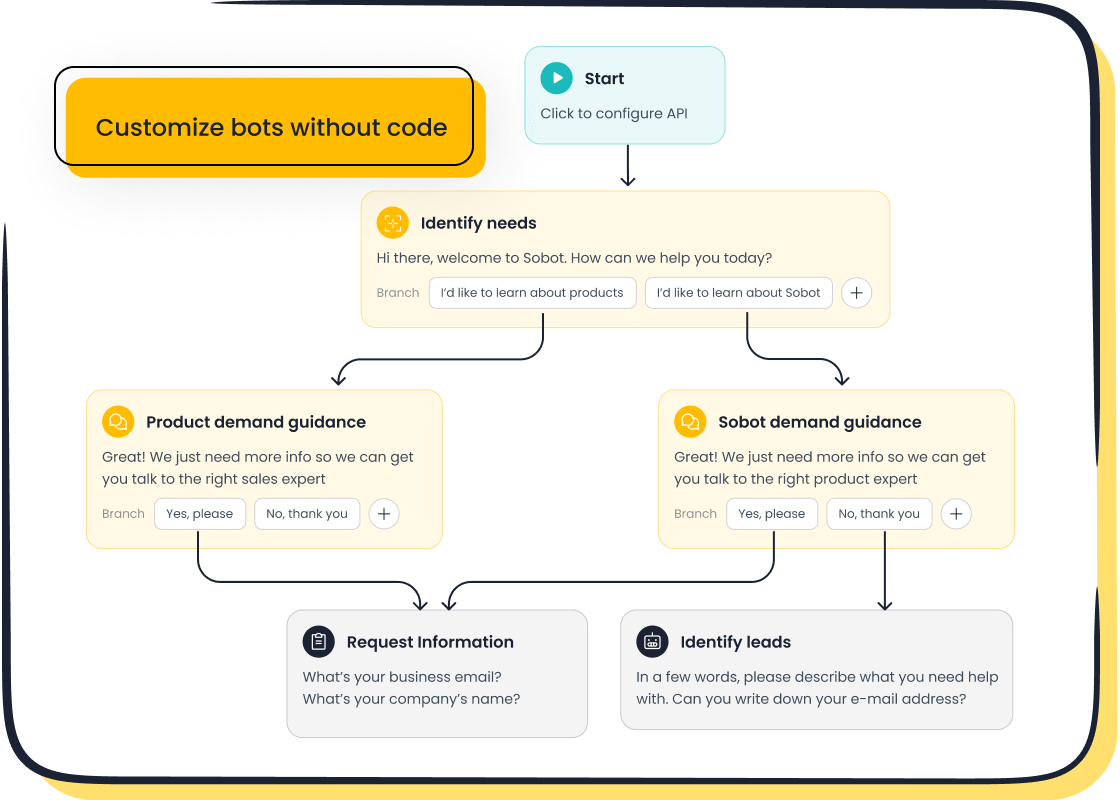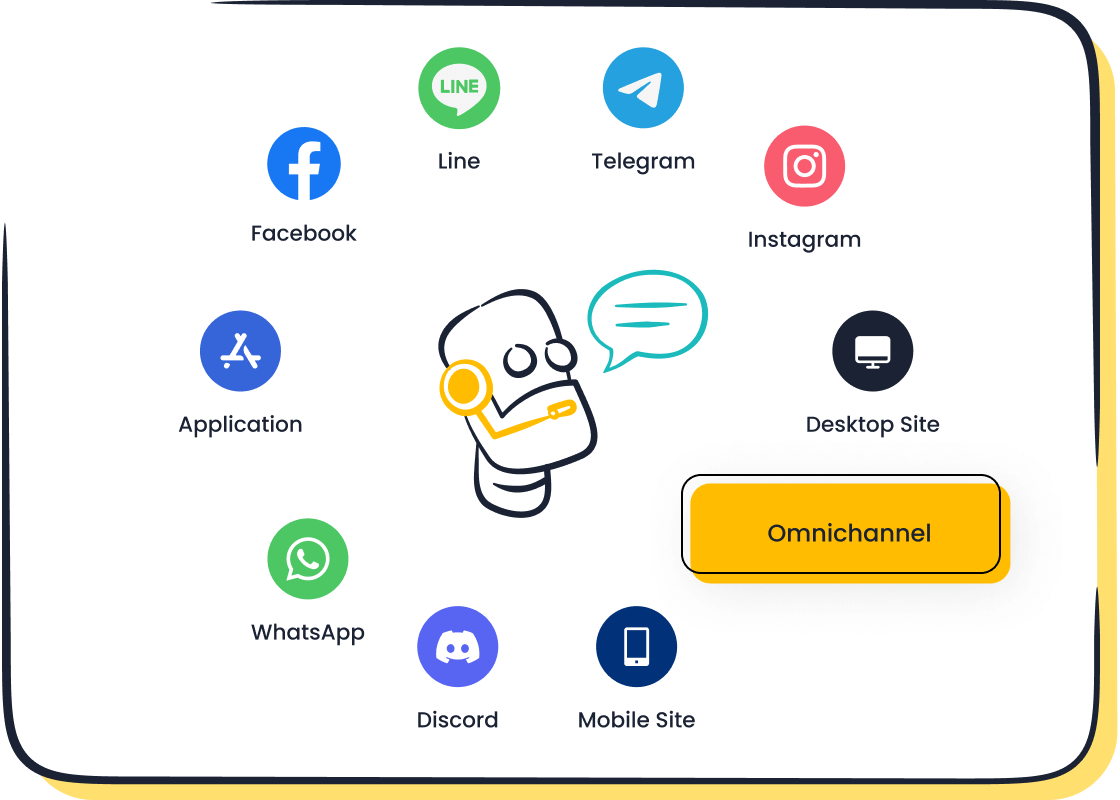The Complete Handbook for Customer Service Chatbots 2025

Customer service chatbots have revolutionized how businesses interact with customers in 2025. These tools streamline operations, enhance customer satisfaction, and reduce costs. For instance, 95% of customer service leaders predict AI bots will handle interactions within three years, boosting productivity by up to 50% Boston Consulting Group. Sobot's Chatbot exemplifies this transformation by demonstrating how automated chatbots work to increase customer service through 24/7 multilingual support and automating repetitive tasks. With 90% of businesses reporting faster complaint resolution through chatbots, adopting solutions like Sobot's ensures you stay competitive in a rapidly evolving market.
What Are Customer Service Chatbots?

Definition and Purpose
What is a customer service chatbot?
A customer service chatbot is a digital tool designed to automate interactions between businesses and their customers. These chatbots use advanced technologies like artificial intelligence (AI) and natural language processing (NLP) to understand and respond to customer queries. They can handle tasks such as answering questions, providing product information, and guiding users through processes. By automating routine tasks, chatbots allow human agents to focus on more complex issues, improving overall service quality.
According to industry reports, chatbots are highly valued for their ability to respond quickly and facilitate self-service. For example, 61% of consumers prefer faster replies from AI, while 68% appreciate the quick responses chatbots provide. These tools not only enhance customer satisfaction but also reduce operational costs for businesses.
How Sobot's Chatbot enhances customer service

Sobot's AI chatbot takes customer service to the next level. It operates 24/7, offering multilingual support to cater to a global audience. This chatbot autonomously handles repetitive queries, saving up to 50% on agent costs. Its no-coding-required setup makes it accessible for businesses of all sizes. Additionally, Sobot's chatbot boosts conversions by 20% through proactive messaging and real-time assistance. By integrating seamlessly with platforms like WhatsApp and SMS, it ensures a smooth customer experience.
Types of Chatbots
Rule-based chatbots
Rule-based chatbots follow predefined scripts and decision trees to interact with users. They are ideal for handling straightforward queries like FAQs or basic troubleshooting. However, they lack the ability to learn or adapt to new situations, making them less effective for complex customer interactions.
AI-powered chatbots like Sobot's Chatbot

AI-powered chatbots, such as Sobot's, use machine learning and NLP to understand context and intent. These chatbots can handle nuanced conversations, provide personalized responses, and even predict customer needs. For instance, Sobot's chatbot uses a knowledge base built from various sources to deliver accurate answers instantly. Its AI-driven capabilities make it a powerful tool for modern customer service.
Common Use Cases
Automating FAQs and repetitive queries
Chatbots excel at automating FAQs, directing customers to relevant resources like help center articles or community forums. This reduces the workload for human agents and ensures customers get quick answers.
Supporting order tracking and returns
AI chatbots simplify processes like order tracking and returns. They provide real-time updates and guide customers through return policies, enhancing the overall shopping experience.
Providing 24/7 multilingual support
With multilingual capabilities, chatbots can communicate in a customer's preferred language. This feature is crucial for businesses with a global presence, ensuring consistent support across different time zones.

How Automated Chatbots Work to Increase Customer Service
Core Technologies Behind Chatbots
Natural Language Processing (NLP)
NLP enables chatbots to understand and interpret human language. It helps them identify the intent behind customer queries and respond appropriately. For example, NLP allows AI chatbots to detect sentiment, ensuring they provide empathetic responses when customers express frustration. This technology enhances customer interactions by making them feel more natural and human-like. According to Gartner, 80% of customer service organizations will use generative AI, including NLP, to improve productivity by 2025.
Artificial Intelligence (AI) and Machine Learning (ML)
AI and ML empower chatbots to learn from past interactions and improve over time. AI automation enables chatbots to handle complex conversations, while ML refines their responses based on user feedback. For instance, Sobot's AI chatbot uses these technologies to deliver accurate answers and predict customer needs. McKinsey reports that generative AI could add $2.6 trillion to $4.4 trillion annually, showcasing its transformative potential.
The Chatbot Workflow
Input Processing and Intent Recognition
When a customer interacts with a chatbot, the system processes the input to identify the user's intent. AI chatbots analyze keywords, context, and tone to determine the best course of action. For example, Delta Airlines uses chatbots to assist with flight information by recognizing specific requests like "check-in" or "flight status." This process ensures timely and relevant assistance.
Generating Accurate Responses
Once the intent is identified, the chatbot generates a response using its knowledge base. Sobot's chatbot, for example, leverages AI automation to provide precise answers instantly. It also adapts its replies based on user behavior, ensuring a personalized experience. CHI Software's chatbot implementation improved response efficiency by 20%, highlighting the effectiveness of this workflow.
Integration with Customer Service Platforms
CRM Systems and Omnichannel Support
Integrating chatbots with CRM systems allows them to access customer data and provide personalized support. Omnichannel capabilities enable chatbots to interact across platforms like WhatsApp and SMS, ensuring seamless communication. Businesses save time and resources while delivering consistent service.
Sobot's Seamless Integration Capabilities

Sobot's chatbot integrates effortlessly with CRM systems and customer-preferred channels. This integration streamlines operations by managing tickets, updating customer information, and escalating issues when needed. With omnichannel support, Sobot ensures your customers receive quick and efficient assistance, reducing wait times and improving satisfaction.
Benefits of Using Chatbots in Customer Service
Operational Advantages
Cost savings and efficiency improvements
Chatbots significantly reduce operational costs by automating repetitive tasks and eliminating the need for additional human agents. Businesses save on hourly wages, training expenses, and turnover costs. For example, organizations using AI chatbots report up to a 30% reduction in customer service costs, according to a Stanford University study. Chatbots also improve operational efficiency by integrating with backend systems to handle complex tasks like order processing or account updates. This allows your team to focus on high-value interactions, enhancing productivity and customer satisfaction.
| Benefit | Description |
|---|---|
| Automating Repetitive Tasks | Chatbots handle high-volume inquiries 24/7, reducing the need for human agents. |
| Reducing Labor Costs | Offloading routine inquiries allows businesses to decrease reliance on large customer service teams. |
| Improving Operational Efficiency | Integration with backend systems enables chatbots to perform complex tasks, streamlining operations. |
| Reallocating Resources Strategically | Human agents can focus on complex issues, enhancing productivity and customer relationships. |
Scalability for high query volumes
Chatbots excel at managing high volumes of customer inquiries simultaneously. Unlike human agents, they can operate across multiple platforms like WhatsApp, Facebook Messenger, and websites without additional costs. This scalability ensures your business can grow without proportionally increasing customer support expenses. For instance, AI chatbots can handle four times as many interactions as human agents, making them an indispensable tool for scaling customer service operations.
Enhancing Customer Experience
24/7 availability and faster response times
Customers expect immediate assistance, and chatbots deliver. They provide 24/7 support, ensuring no query goes unanswered, even outside business hours. While human agents average a response time of 2 minutes and 40 seconds, chatbots reply in under 5 seconds. This faster support speed improves customer satisfaction and builds trust. According to recent data, 80% of customers expect 24/7 availability, and 69% prefer chatbots for quick communication.

Multilingual support for global customers
AI chatbots like Sobot's offer multilingual capabilities, enabling businesses to serve a global audience. This feature ensures customers receive support in their preferred language, enhancing their experience and satisfaction. For example, Sobot's chatbot supports multiple languages and operates seamlessly across various channels, making it an ideal solution for businesses with international customers.
Data Collection and Insights
Gathering actionable customer feedback
Chatbots naturally collect valuable customer feedback during interactions. By asking targeted questions, they gather insights without feeling intrusive. For example, Delta Airlines uses chatbots to collect feedback on flight experiences, which helps refine their services. This data allows businesses to identify pain points and improve customer satisfaction.
Leveraging analytics to improve services
AI-powered chatbots analyze customer interactions to provide actionable insights. These analytics help businesses understand customer behavior, predict needs, and personalize future interactions. For instance, in retail, chatbots analyze purchase patterns to recommend products, boosting sales and satisfaction. Sobot's chatbot includes robust reporting tools, enabling you to optimize your customer service strategies effectively.
Step-by-Step Guide to Implementing Chatbots
Assessing Business Needs
Identifying customer pain points and goals
Before implementing chatbots, you must identify the challenges your customers face. Start by analyzing frequent inquiries and common frustrations. For example, are customers struggling with order tracking or finding product details? Engage with your support team to uncover inefficiencies in current processes. Align these insights with your business goals, such as improving response times or reducing operational costs. A structured approach ensures your chatbot addresses real customer needs effectively.
| Step | Insight |
|---|---|
| 1 | Assess current customer support needs to identify areas for improvement. |
| 2 | Gather insights on frequent customer inquiries and common pain points. |
| 3 | Collaborate with support teams to understand existing challenges. |
| 4 | Align chatbot capabilities with customer expectations and workflows. |
Evaluating the need for Sobot's Chatbot

Sobot's chatbot offers a robust solution for businesses aiming to enhance customer interactions. It operates 24/7, handles repetitive queries, and supports multiple languages. These features make it ideal for businesses with global audiences. Additionally, its no-coding-required setup simplifies deployment, saving time and resources. By adopting Sobot's chatbot, you can improve efficiency, cut costs, and boost customer satisfaction.
Choosing the Right Chatbot Platform
Comparing rule-based and AI-powered solutions
When choosing a customer service chatbot, consider your business needs. Rule-based chatbots work well for straightforward tasks like FAQs. They follow predefined scripts, ensuring predictable outcomes. However, AI-powered chatbots, like Sobot's, excel in handling complex customer interactions. They use machine learning to understand intent and provide personalized responses. For instance, e-commerce brands benefit from AI chatbots for product recommendations, while rule-based systems handle order inquiries efficiently.
Why Sobot's Chatbot is a top choice
Sobot's chatbot combines the best of AI technology with user-friendly features. It integrates seamlessly with platforms like WhatsApp and SMS, ensuring omnichannel support. Its multilingual capabilities cater to diverse audiences, while its proactive messaging boosts conversions by 20%. These advantages make Sobot's chatbot a reliable choice for businesses seeking to enhance customer service.
Designing Conversation Flows
Mapping customer interactions
Effective chatbot design begins with mapping customer interactions. Identify user intents, such as checking order status or requesting support. Define the chatbot's responses and actions for each scenario. For example, an e-commerce chatbot might guide users through product categories before suggesting items. Use decision nodes to create clear paths, ensuring the chatbot addresses customer needs efficiently.
| Key Components | Description |
|---|---|
| User Intents | The goals or needs of the user that the chatbot aims to address. |
| Responses | The replies or actions taken by the chatbot based on user inputs. |
| Actions | Tasks performed by the chatbot after a trigger, such as sending messages or redirecting users. |
| Decision Nodes | Points in the flow where the chatbot must choose a path based on user input. |
| Best Practices | Guidelines for creating effective flowcharts, such as simplicity, user-centric design, and clarity. |
Ensuring clarity and simplicity in responses
Clarity is key to a successful chatbot. Avoid jargon and keep responses concise. For instance, instead of saying, "Your inquiry is being processed," use "We’re checking your request now." Sobot's chatbot excels in delivering clear, accurate replies, thanks to its AI-driven knowledge base. This ensures customers receive the information they need without confusion, enhancing their overall experience.
Training and Testing
Training the chatbot with relevant data
Training your chatbot effectively ensures it delivers accurate and helpful responses. Start by feeding it a diverse dataset that reflects real customer interactions. This dataset should include common queries, complaints, and feedback. Using pre-trained models can save time and improve performance. For example, transfer learning allows your chatbot to adapt existing knowledge to your specific use case. Regularly updating its knowledge base ensures it stays relevant as customer needs evolve.
Incorporating user feedback into training is another critical step. Analyze customer interactions to identify gaps in the chatbot's responses. For instance, if users frequently rephrase questions, it may indicate the chatbot struggles with intent recognition. Addressing these gaps improves its accuracy and reliability. A/B testing different response styles can also help you determine what works best for your audience.
Testing for accuracy and performance
Testing ensures your chatbot performs as expected before deployment. Use a variety of testing methods, such as usability testing to evaluate user experience and security testing to protect customer data. Validation testing with separate datasets helps verify the chatbot's ability to generalize across different scenarios.
A/B testing is particularly useful for refining responses. For example, you can test two versions of a greeting to see which one engages users more effectively. Regular testing and updates keep your chatbot aligned with customer expectations, ensuring it remains a valuable tool for your service strategy.
Deployment and Monitoring
Launching the chatbot on multiple channels
Deploying your chatbot across multiple channels maximizes its reach and effectiveness. Start with a pilot test involving a small group of users. This allows you to gather feedback and make adjustments before a full-scale launch. Once optimized, integrate the chatbot with platforms like WhatsApp, SMS, and your website. This omnichannel approach ensures customers can access support wherever they prefer.
For example, Sobot's chatbot integrates seamlessly with various platforms, offering consistent service across all channels. This flexibility not only enhances customer satisfaction but also streamlines your operations.
Continuous monitoring and optimization
Monitoring your chatbot's performance is essential for long-term success. Use analytics tools to track metrics like response time, resolution rate, and customer satisfaction. Post-conversation surveys and direct feedback requests provide valuable insights into user experiences.
Regular updates based on these insights keep your chatbot effective. For instance, if analytics reveal a drop in resolution rates, you can refine its knowledge base or adjust its workflows. Continuous monitoring ensures your chatbot evolves alongside customer needs, maintaining its role as a cornerstone of your service strategy.
Best Practices for Chatbot Deployment
Personalization and Human Touch
Customizing responses to reflect brand voice
Personalization is key to creating meaningful customer interactions. Tailoring chatbot responses to reflect your brand voice ensures consistency across all communication channels. For example, a chatbot can use conversational scripts that align with your brand’s tone, whether formal or friendly. Regularly updating these scripts keeps them relevant to customer preferences and trends. Adding personality elements, such as a gender-neutral name or engaging in small talk, makes the chatbot feel more human-like. Sobot’s chatbot excels in this area by allowing businesses to customize responses dynamically, ensuring every interaction feels authentic and aligned with the brand identity.
| Mechanism | Evidence |
|---|---|
| Personality | The chatbot introduced itself with a gender-neutral name, signaling a personality. |
| Identity | Use of first-person pronouns increased likeability in interactions. |
| Small Talk | Engaging in small talk reduced emotional distance and made the chatbot appear more human-like. |
| Empathy | Processing user responses to show empathy enhanced the interaction experience. |
Knowing when to escalate to human agents
While chatbots handle routine queries efficiently, knowing when to transfer complex issues to human agents is crucial. Customers often prefer human support for nuanced problems, with 85% expressing this need in surveys. Sobot’s chatbot incorporates escalation triggers, ensuring seamless handoffs when required. For instance, if a customer repeatedly rephrases a question or expresses frustration, the chatbot can escalate the conversation to a live agent. This balance between automation and human interaction improves satisfaction and builds trust.
Balancing Automation and Human Interaction
Avoiding over-automation pitfalls
Over-automation can alienate customers. While 68% appreciate quick chatbot responses, 75% feel chatbots struggle with complex issues. To avoid this, focus on deploying chatbots for tasks they excel at, such as FAQs or order tracking. Sobot’s chatbot integrates analytics to identify areas where automation works best, ensuring it complements rather than replaces human agents. Conducting regular performance reviews helps refine workflows and maintain a balance that meets customer expectations.
Ensuring seamless handoffs to live agents
Smooth transitions between chatbots and human agents are essential for customer satisfaction. Sobot’s chatbot uses omnichannel integration to provide agents with context, such as previous interactions and customer preferences. This eliminates repetitive questioning and speeds up resolution times. For example, when a chatbot escalates a query, the agent receives a detailed summary, enabling them to address the issue efficiently. This approach ensures customers feel valued and supported throughout their journey.

Ensuring Privacy and Security
Protecting sensitive customer data
Data privacy is a top priority in chatbot deployment. Chatbots must comply with regulations like GDPR and CCPA to safeguard customer information. Sobot’s chatbot uses robust encryption measures to protect sensitive data during interactions. For example, it anonymizes personal details and restricts access to authorized personnel only. Regular audits and updates ensure compliance with evolving standards, reducing the risk of breaches.
| Aspect | GDPR | CCPA |
|---|---|---|
| Scope | Applies to entities processing personal data of EU residents | Applies to businesses operating in California or handling California residents' data |
| Personal Data Definition | Includes any information relating to an identifiable person | Includes information linked to a consumer or household |
| Consumer Rights | Right to access, correct, and delete personal data | Right to know, delete, and opt-out of data sales |
| Consent Requirement | Requires clear consent for data processing | Requires opt-out consent for data sales |
| Penalties | Fines up to €20 million or 4% of global annual turnover | Fines up to $7,500 per intentional violation |
Complying with data protection regulations
Compliance with data protection laws builds customer trust. Sobot’s chatbot adheres to GDPR and CCPA requirements, ensuring transparency in data handling. For instance, it provides customers with options to access, correct, or delete their data. Clear consent mechanisms further enhance trust, making Sobot’s chatbot a reliable choice for secure customer interactions.
Challenges and Solutions in Chatbot Implementation
Handling Complex Queries
Using AI to address nuanced questions
Understanding complex queries is one of the biggest challenges for chatbots. Customers often use idioms, slang, or ambiguous language, making it difficult for chatbots to interpret their intent. To overcome this, businesses rely on advanced natural language processing (NLP) and machine learning techniques. These technologies enable chatbots to analyze context, detect sentiment, and provide accurate responses. For example, AI chatbots can identify frustration in a customer's tone and adjust their replies to be more empathetic.
“AI customer service chatbots often include human-in-the-loop capabilities, allowing support teams to handle escalated queries effectively.”
Additionally, fallback options ensure unresolved issues are redirected to human agents or self-service resources. This balance between automation and human interaction improves customer satisfaction and ensures no query goes unanswered.
Leveraging Sobot's Chatbot for advanced query resolution
Sobot's chatbot excels in handling complex customer interactions. It uses a robust knowledge base and AI-driven algorithms to deliver precise answers. Its ability to learn from past interactions ensures continuous improvement. For example, Sobot's chatbot can resolve nuanced queries like product recommendations or troubleshooting steps, reducing the need for human intervention. This advanced customer support chatbot empowers your team to focus on high-value tasks while maintaining exceptional service quality.
Ensuring Data Security
Addressing privacy concerns
Data security is a critical concern when implementing chatbots. Customers expect their information to remain confidential. To address this, businesses must adopt best practices like data minimization and transparent usage policies. Regular audits and employee training also play a vital role in maintaining trust. For instance, ensuring that chatbots collect only essential data reduces exposure risks and aligns with privacy regulations like GDPR and CCPA.
Implementing robust encryption measures
Encryption is essential for protecting sensitive customer information. End-to-end encryption ensures that only the sender and receiver can access transmitted data. Sobot's chatbot employs strong encryption methods to safeguard data both in transit and at rest. It also uses access controls to limit data visibility to authorized personnel. These measures, combined with regular software updates, create a secure environment for customer interactions.
Overcoming Resistance to Adoption
Educating stakeholders on chatbot benefits
Resistance to adopting chatbots often stems from a lack of understanding. Educating your team about the benefits of AI chatbots can ease concerns. Training sessions and resource materials help employees see how chatbots reduce repetitive tasks and enhance productivity. For example, MBC Group involved employees in their chatbot implementation process, transforming them into advocates for the technology. This approach fosters acceptance and builds confidence in using chatbots effectively.
Demonstrating ROI with Sobot's Chatbot

Proving the return on investment (ROI) is key to overcoming resistance. Sobot's chatbot demonstrates measurable benefits, such as a 50% reduction in agent costs and a 20% boost in conversions. Sharing these metrics with stakeholders highlights the value of chatbot integration. Real-world success stories, like OPPO achieving an 83% chatbot resolution rate, further illustrate how Sobot's chatbot drives efficiency and customer satisfaction.
Future Trends in Customer Service Chatbots

Advancements in AI and NLP
Real-time language translation
AI chatbots are transforming global customer support with real-time language translation. This feature allows you to communicate with customers in their preferred language, breaking down language barriers. For example, Sobot's chatbot supports multiple languages, ensuring seamless interactions across diverse regions. The arrival of large language models like ChatGPT has accelerated this trend, enabling chatbots to translate text instantly while maintaining context and tone. Gartner predicts that by 2025, 80% of customer service organizations will use generative AI to enhance productivity and customer experience. This advancement ensures your business can provide inclusive and efficient service worldwide.
Improved contextual understanding
AI advancements have also improved chatbots' ability to understand context. Modern AI chatbots analyze customer intent, tone, and past interactions to deliver personalized responses. For instance, if a customer asks about a delayed order, the chatbot can reference previous queries and provide updates without requiring additional input. McKinsey highlights that AI-enabled customer service is the fastest way to deliver tailored experiences. This capability not only enhances customer satisfaction but also builds trust by making interactions feel more human.
Integration with Emerging Technologies
Voice assistants and IoT devices
The integration of chatbots with voice assistants and IoT devices is reshaping customer interactions. Imagine asking a smart speaker to check your order status or troubleshoot a device issue. Sobot's chatbot can integrate with platforms like WhatsApp and SMS, paving the way for future compatibility with voice-enabled devices. Analysts predict significant growth in chatbot adoption across industries, driven by these advancements. This trend ensures your business stays ahead by offering innovative customer support solutions.
Augmented reality (AR) for enhanced support
AR technology is another emerging trend in customer service. Chatbots equipped with AR capabilities can guide customers visually, making complex tasks easier. For example, an AR-enabled chatbot could help a customer assemble furniture by overlaying step-by-step instructions on their smartphone screen. This feature enhances the support experience by combining visual aids with AI-driven assistance, ensuring customers receive clear and actionable guidance.
Hyper-Personalization
Predictive analytics for proactive support
Predictive analytics is revolutionizing how chatbots anticipate customer needs. By analyzing data patterns, AI chatbots can predict issues before they arise and offer proactive solutions. For instance, if a customer frequently searches for product troubleshooting tips, the chatbot can suggest maintenance advice or schedule a service check. This proactive approach not only resolves problems faster but also strengthens customer loyalty.
Leveraging customer data for tailored interactions
AI chatbots excel at using customer data to create personalized experiences. They analyze purchase history, preferences, and behavior to recommend products or services. For example, Sobot's chatbot uses its knowledge base to provide accurate and customized responses, ensuring every interaction feels relevant. McKinsey emphasizes that personalized customer service is now an expectation, making this trend essential for businesses aiming to enhance satisfaction and retention.
Customer service chatbots have redefined how businesses interact with customers. These tools improve efficiency, reduce costs, and enhance satisfaction. Sobot's chatbot exemplifies this transformation. It operates 24/7, handles repetitive queries, and supports multiple languages. Its AI-driven features ensure accurate responses and seamless integration with platforms like WhatsApp. By adopting chatbots, you can stay competitive, meet customer expectations, and scale your service operations effectively. The future of customer service lies in automation, and Sobot's chatbot positions your business for success.
FAQ
What is the main purpose of a customer service chatbot?
A customer service chatbot automates interactions between your business and customers. It handles repetitive tasks like answering FAQs, tracking orders, and providing 24/7 support. This improves efficiency and allows human agents to focus on complex issues. For example, Sobot's chatbot reduces agent costs by up to 50%.
Can a chatbot handle multiple languages?
Yes, many chatbots, including Sobot's, support multiple languages. This feature ensures you can serve a global customer base effectively. For instance, Sobot's chatbot operates in various languages, providing consistent support across different regions and time zones.
How does a chatbot improve customer satisfaction?
A chatbot enhances satisfaction by offering instant responses, 24/7 availability, and personalized interactions. For example, 80% of customers prefer quick replies from chatbots. Sobot's chatbot uses AI to deliver accurate answers and proactive assistance, ensuring a seamless experience.
Is coding required to set up a chatbot?
No, many modern chatbots, like Sobot's, require no coding. They feature user-friendly interfaces with drag-and-drop tools. This makes it easy for businesses of all sizes to design and deploy workflows without technical expertise.
How do chatbots collect customer feedback?
Chatbots gather feedback during interactions by asking targeted questions. For example, they may ask about satisfaction after resolving an issue. This data helps you identify pain points and improve services. Sobot's chatbot includes robust analytics tools for actionable insights.
See Also
Enhancing Customer Satisfaction Through E-commerce Chatbots
The 10 Most Effective Chatbots for Websites This Year
Selecting The Ideal Chatbot Software: A Comprehensive Guide